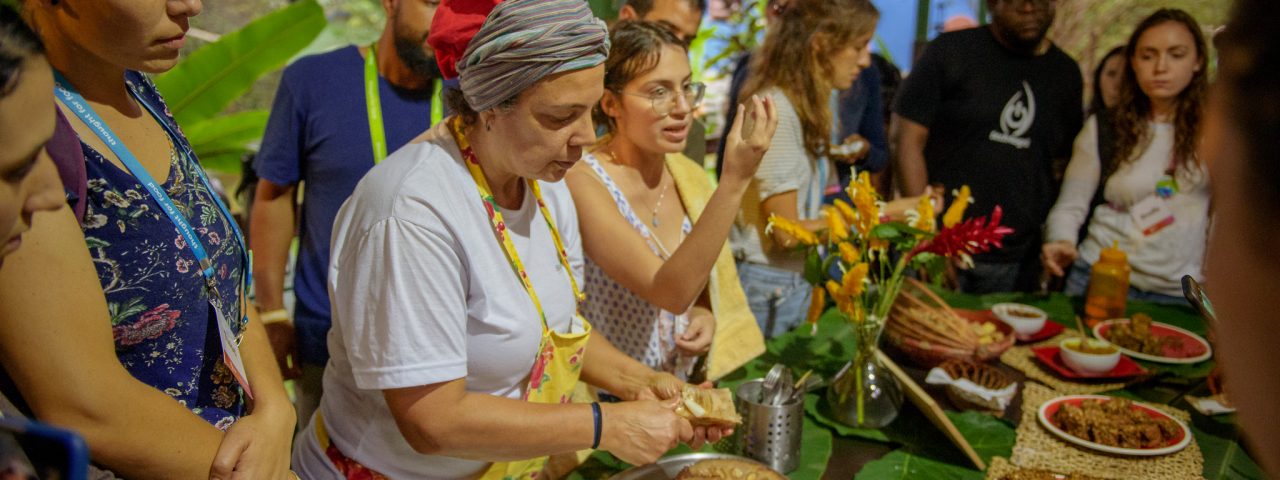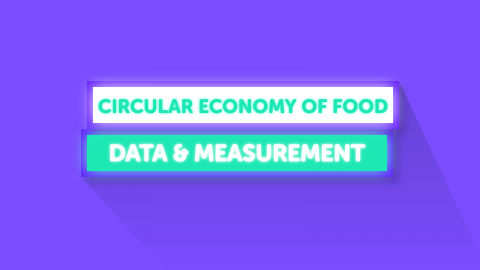The Importance of Data and Measurement within the Circular Economy

TFF Founder and CEO Christine Gould was joined by Ethan Soloviev, the Chief Innovation Officer at HowGood and an owner of High Falls Farm to discuss why we need data to measure the circular economy and what some of the key indicators are.
Below you can find some conversation highlights, as well as the full recording of the session. Use the indicated times to jump to the respective question in the video.

00.00 – Introduction Ethan and HowGood
10.00 – In your own words, what is the Circular Economy of Food?
The whole food product lifecycle has a positive impact on ecological and environmental systems. The net-zero definition is not enough. When it comes to food, it is not as easy as with plastic, etc. You are engaging with living systems, circles don’t even exist in nature. We have to think in a systemic way to achieve this concept.
12.30 – How does someone in a startup think about the Circular Economy of Food and what are the first steps to becoming circular?
- Try to see the whole system, as much as you can understand
- It’s useful to have pictures/ frameworks that allow you to see the whole at a glance
- Understand where you are intervening in the system with a solution, ask yourself the question “Where am I uniquely positioned to intervene?”
14.15 – The Food Product Lifecycle
Supply chains don’t exist, in living systems, there are no chains (read more in Ethan’s article The End of Supply “Chains”)

21.37 – How do you compare what is more sustainable?
23.02 – How do you see the processors in the Circular Economy
This is a great opportunity for them because it is harder to have a net-impact. The most important metric for them is: What is the non-renewable energy use of the processing that you are doing?
Questions they should be asking on an ongoing basis:
-
- Can I become more efficient, using less energy?
- Can what I am processing, the by-products, be used for something more valuable?
- What renewable energy sources are being used for processing?
29.50 – We are starting to see real change happening in the industry, even by big food incumbents. Are you seeing enough attention being paid to biodiversity?
If we shifted all of our attention from packaging and focused on the food production side, we would be moving much faster. This is not to say that we should be doing one or another, rather we should be putting solutions in the area based on the impact they have. Packaging solutions are tangible, it’s easier to make a change and there is a big marketing opportunity for organisations. These are the reasons why we everyone so focused on packaging right now. We now have enough science and data to know what the best production practices are. We know that we can capture carbon in the ground, the biomass.
32.35 – Certifications & metrics
- 400 certifications, navigating among them can be a bit confusing
- The issues with all certifications are that they are primarily practice-based and not based on outcomes and results. There is a new set of certifications coming up that are looking at it from a regenerative agriculture outcome, more holistic, and outcomes-based.
Metrics:
- Food production: carbon emissions per Unit
- Supply chain: carbon emissions per Unit
- Processing: kilocalories energy expanded per Unit
- Conversion & manufacturing: % weight waste
- Packaging: % of packaging that is reusable, recyclable or compostable or from renewable or recycled sources
- Retailing: Kilocalories energy expanded per Unit
- Preparing & Eating: Kilocalories energy expanded per Unit
- Post-Use: % of the remainder of food upcycled or re-invested
Fun fact
Did you know...
... that the greatest carbon impact for pasta comes from boiling the water when cooking the pasta? 🍝
47.00 – Measuring the impact sounds very time consuming for startups. Why should startups put in their efforts?
Before you even start, think about where you want to have a positive impact and design products from this standpoint. Products that have gone the farthest in the circular economy are performing the best in the market. This shows us that customers care. We can then increase levels of credibility in front of consumers, investors, etc.
51.20 – Let’s talk about meat and alternative proteins. How do you get your head around the complexity of the topic?
Just look at carbon and lay out all the options: which option produces the least carbon?
- Plant-based meat alternatives generally do less harm
- Grassfed beef can actually sequester carbon (positive impact)
59.07 – Is there a website where I can find circular economy examples?
There is not yet an overview of examples but the Ellen MacArthur Foundation has the best stories and collections. Look towards the Regenerative Agriculture community looking for product examples. Circular Economy and Regenerative Agriculture are not the same but there certainly is some overlap.
More about Ethan:
http://www.ethansoloviev.com/
https://medium.com/@ethansoloviev
TFF Challenge
Sign up and pitch by January 31st, 2020!
Enjoy more live sessions like this one by signing up for the TFF Challenge on the TFF Digital Labs.